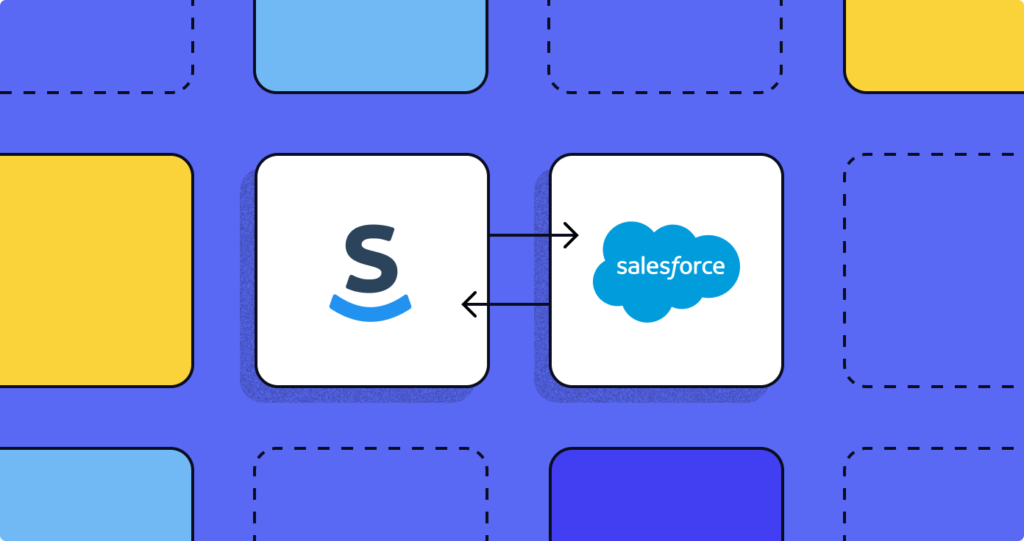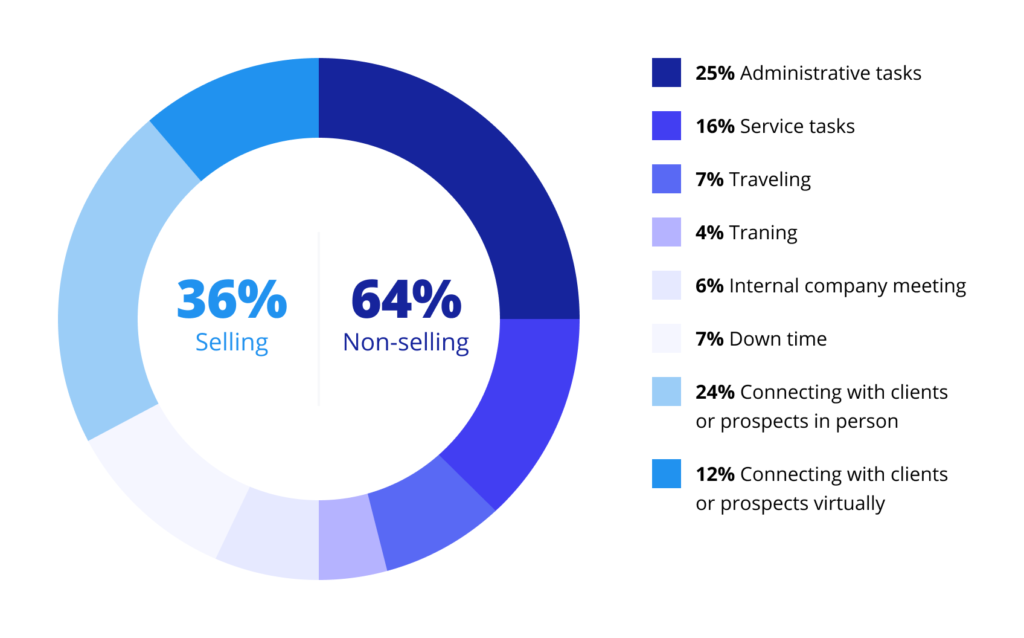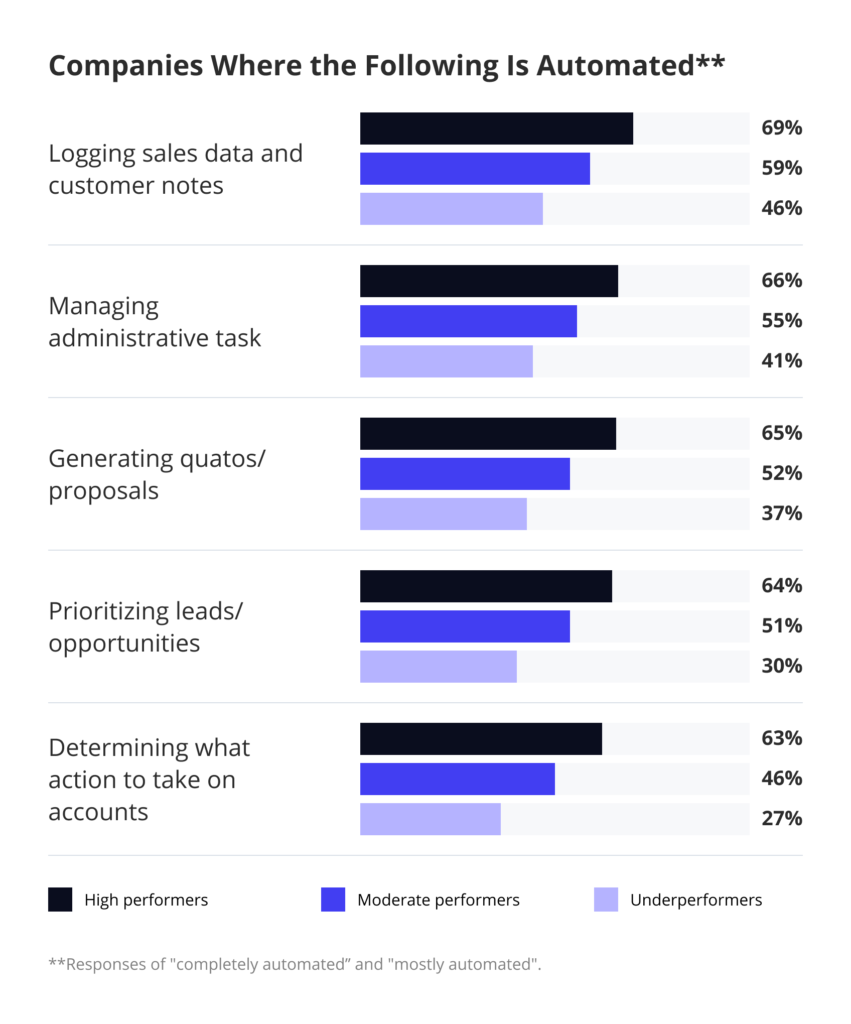How to automate your sales process with the airSlate for Salesforce integration

The emergence of COVID-19 has changed the nature of sales — from performance-oriented to customer-centric. The pandemic also created a new type of customer — the far more informed individual who is more demanding, less loyal, and extremely reliant on their internet connection. Pressured with the need of making remote sales operations more efficient and customer-centric, sales teams pivoted to accommodate this change by adopting Salesforce process automation.
In their day-to-day job, sales teams are often challenged with burdensome audit trails, poor record management, and a lack of visibility into contract signing and deal development. Going remote only made things worse, especially for those 52% of US business owners who had not digitized their business processes before the pandemic.
Automating sales and procurement with Salesforce allows sales teams to close 30% more deals, while also reducing the sales cycle by 18%, thus saving 14% the administration process. #Salesforce #automation @airSlateAcademy Click To Tweet
This blog will talk about Salesforce process automation and explore routine sales processes that you can easily automate today. You’ll also learn how to use airSlate’s Salesforce Integration Bots to streamline processes for sales and procurement departments. Finally, you will learn how to advance your Salesforce automation skills by enrolling in a variety of free business automation courses at the airSlate Academy.
Why more sales teams automate processes with Salesforce
Business automation continues to be one of the dominating tech trends in 2022 that drive digital transformation across different industries, including sales and procurement. According to Salesforce’s ‘State of Sales’ report, only 41% of organizations leveraged sales process automation pre-COVID. In fact, sales reps used to spend 64% of their time on non-selling activities such as administrative tasks (25%), service tasks (16%), traveling (7%), downtime (7%), internal company meetings (6%), and training (4%). Personal meetings with customers accounted for 24% of a typical sales rep’s time while connecting with customers virtually accounted for only 12% of their time.

In 2021, the sales landscape changed significantly. Research indicates that
53% of organizations started using sales process automation and tools that helped automate sales forecasting, quotation, account and contact management, and other sales processes. #Salesforce #automation @airSlateAcademy Click To Tweet
In fact, 79% of sales reps said they’ve had to adapt quickly to new ways of selling by leveraging more methods of automation. In addition, top performers started automating repetitive sales-related tasks:
- 69% of respondents automated the process of logging sales data and customer notes
- 66% of respondents introduced automation while managing repetitive tasks
- 65% of respondents automated the process of generating quotes and proposals.

Although Salesforce is a universal tool for sales teams, it’s possible to extend its functionality by integrating it with workflow automation solutions and productivity apps. By the way, you can learn more on how to export data from Salesforce to Google Sheets with airSlate Bots. In fact, Salesforce and airSlate’s integration allows sales departments to streamline and automate their routine processes using no-code bots.
How airSlate and Salesforce process automation works
airSlate for Salesforce is an end-to-end workflow automation solution, which allows sales reps to create custom workflows featuring document generation, web forms and surveys, eSignature, contract negotiation, and more.
The airSlate integration for Salesforce addresses the most challenging tasks for businesses looking to automate their workflows within their Salesforce organization. #Salesforce #automation @airSlateAcademy Click To Tweet
airSlate accomplishes this using the following integration components:
– Integration Bots that enable users to collect data from external systems and communicate updates.
– Integration apps that connect an external system workspace to an airSlate workspace. This provides access to airSlate Flow Templates via shortcuts available to users and allows users of external systems to track the progress of their Slates (a collection of documents) in airSlate.
– Integrated automation that provides native capabilities for external systems to create workflows in airSlate.
airSlate’s Salesforce Integration Bots can be launched from a Salesforce account providing sales teams with an easy and seamless single point of control. You can learn how to install, set up, and use airSlate’s Salesforce Integration Bots by enrolling in free courses at the airSlate Academy:
- The Create Salesforce Record Bot automatically generates new Salesforce records by transferring data from a completed flow template.
- The Pre-fill from Salesforce Record Bot automatically populates documents with data taken from one or multiple related Salesforce records.
- The Update Salesforce Record Bot automatically updates Salesforce records with data from a completed Flow (collection of documents).
- The Export to Salesforce Bot automatically uploads a flow template to a specific Salesforce record.
Find out how to easily automate workflows in your Salesforce account using no-code airSlate Bots. Watch the video below to learn how to:
☑️ Route documents between CRM contacts and internal & external recipients
☑️ Generate documents pre-filled with Salesforce data
☑️ Create new records based on data entered in a document’s fillable fields
☑️ Update existing records based on data entered in fillable fields.
Learn everything you need to digitally transform your business with the airSlate Academy’s free online courses. From starter courses covering automation basics to expert certifications that demonstrate how to digitally transform your business.
airSlate’s library of Salesforce Integration Bots allows sales teams to optimize their existing document workflows. In simple terms, a sales representative can take the data from those documents, update the underlying documents, and receive the data right back in Salesforce.
8 things you can do when automating sales workflows in Salesforce with airSlate’s no-code integration:
- Generate actionable documents pre-filled with Salesforce data.
- Configure conditional document routing between Salesforce contacts, and internal and external recipients.
- Create new Salesforce records based on data entered into a document’s fillable fields.
- Update existing Salesforce records based on data entered into a document’s fillable fields.
- Save documents to Salesforce attachments or external storage services.
- Change the status of Salesforce records and trigger actions in Salesforce based on the actionable data in documents.
- Send batches of documents with the single click of a button.
- Automate data collection and reporting with scheduled workflows.
Here’s what our customers are saying about the airSlate and Salesforce integration:
T2 Biosystems uses the airSlate for Salesforce integration to ensure a consistent, secure experience for patients. Seamless integration with Salesforce and importing all data from day one has helped T2 significantly improve their experience. Not only were they able to save unfinished forms and complete them later, the form completion process turned out to be quite straightforward. Overall, the airSlate and Salesforce integration helped T2 upgrade and adapt processes while preserving the initial workflow.
airSlate’s ability to seamlessly integrate with Salesforce allowed us to easily disseminate important forms to end-users. It can automatically attach completed forms that meet compliance regulations back into Salesforce.
It only takes a couple of clicks in Salesforce to create a custom button and set a contact record that’s tied to a flow template within airSlate. Doing so allows for taking the existing data, or the data that you’re collecting from a contact or sales lead, and inserting it back into the Salesforce record.
Here’s an example of how you can configure the Pre-fill flow from Salesforce Record Bot to populate any document with data from Salesforce in a few steps:
- Set a condition for pulling Salesforce data into your template and generating a document.
- Connect your Salesforce account.
- Connect your document fields with a Salesforce record.
- Let airSlate automatically populate your document with Salesforce data.

Top 3 sales processes to automate using the airSlate for Salesforce integration
And now, let’s take a look at the top 3 sales processes that the airSlate for Salesforce integration optimizes:
1. Contract negotiation
airSlate for Salesforce can be used to streamline a sales contract negotiation. Let’s view a typical contract negotiation process involving three roles:
- a sales representative who needs to send a sales contract to their client
- a client who wants to purchase goods
- a VP of Sales who needs to approve the sales contract.
The contract negotiation process requires that each of the roles completes the following steps:
- A sales representative, who has been negotiating a deal, sends the sales contract to a client.
- The client reviews the contract, and approves, or suggests changes, if necessary.
- The approved contract is signed by both the client and the VP of Sales before any goods are delivered.
- The sales representative needs to track contract negotiations and the signing process to document the chain of custody.
To automate the contract negotiation process using the airSlate for Salesforce integration, you will need to set up the following Bots:
- The Pre-fill from Salesforce Record Bot to populate the contract with data from the Salesforce Record.
- The Email upon Flow completion Bot to notify each party of any changes that occur during separate stages of the contract negotiation process.
- The Update Salesforce Record Bot to update the existing Salesforce Record with new data, if necessary.
- The Save to Google Drive Bot to automatically save the completed contract to Google Drive.
How to automate contract negotiation using airSlate and Salesforce
As a result of contract negotiations, a sales representative has the Opportunity record in Salesforce along with the details about the deal, as well as Account information and Contact data. Using airSlate, sales reps can add a button on the Opportunity record that will generate a Contract for them automatically, using a pre-defined flow template and data from Salesforce.
Here’s what the contract negotiation process looks like in airSlate:
- Sales can edit the Contract to add more data if needed. Once the Contract is ready, they need to click the Complete button to send the Contract to the Client.
- The Client receives an email with the link to the Contract. They will see the Contract populated with their data automatically and will be able to suggest changes as needed.
- Sales is notified by email about the suggested changes so they can review the changes suggested by the Client. If they are happy with these changes, they can Complete Negotiation. Alternatively, they can keep the Contract editable and continue negotiations.
- When the contract is ready for signing, Sales completes the document and it is sent back to the Client for signing.
- The Client is notified by email and opens the Contract. Sales can choose to be notified by email once the Client opens the Contract. They can also monitor the signing progress without leaving Salesforce.
- Once the Client signs the Contract, the VP of Sales is notified by email. They then open the Contract and sign their part. Sales will see the Opportunity status update automatically in Salesforce with the Sales Contract attached.
- The Client receives the signed Contract by email and the deal is done!
2. Price quotation
Price quotation is one of the most common sales processes that the airSlate for Salesforce integration can streamline. Let’s view a typical price quotation process involving three roles:
- a sales representative who needs to send a Quote to a client
- a client who wants to purchase goods
- a manufacturer who needs to send goods to a client.
To automate the price quotation process using the airSlate for Salesforce integration, you will need to set up the following Bots:
- The Pre-fill from Salesforce Record Bot to populate a Quote with Salesforce data from the selected record.
- The Export to Google Sheet Bot to automatically copy data to the respective fields in a Google Sheet.
- The Email upon Flow completion Bot to notify each party about the changes happening at every stage of the price quotation process.
As a result of negotiating with the Client, Sales has all the necessary information about the deal stored in Salesforce — the Opportunity and related objects, such as Products, Contact, and Account. They are ready to send the Quote.
Here’s what the price quotation process looks like using the airSlate for Salesforce integration:
- Once a Sales representative clicks the custom button added to their Opportunity, the airSlate integration collects data for the Quote from Opportunity, Products, Account, and Contact. Sales can also add information or make changes on the fly and sign from their side.
- When Sales clicks the Complete button on the Quote, it will be automatically sent to the Client. After that, the Opportunity status in Salesforce will be updated. A Quote can also be routed for internal approval, if necessary.
- The Client receives an email notification and opens the Quote. Sales can choose to be notified by email once the Client opens the Quote. They can also monitor the signing progress without leaving Salesforce.
- The Client can review the information, update some details like PO number, and sign the Quote. A payment form can also be included in the package to collect payment immediately, if necessary.
- After that, Sales can see the Opportunity status updated automatically in Salesforce along with the signed document attached. The Account record is also updated with new contact information entered by the Client.
- The Manufacturer can see the Sales Order updated automatically with a PO number. The signed Quote will be attached to the Sales Order record as well.
3. Vendor contract approvals
Sales departments often face a number of bureaucratic bottlenecks during vendor contract approvals. Before sales and procurement can legally start working with new suppliers, they have to fill out registration forms and sign various agreements and policies. Using airSlate’s workflow automation, it’s possible to accelerate and simplify the document flow between all parties involved in the process.
Let’s view a typical vendor contract approval process involving three roles:
- a procurement manager who checks the information about a new vendor and signs a vendor contract
- a vendor – a new supplier who will be providing goods and services. The vendor provides their company’s information, payment details, and signs the contract
- a Chief Operations Officer (COO) who gives final approval, signs the contract, and processes payments.
To automate the process of approving vendors, you will need to set up the following Bots:
- The Pre-fill from Doc to Doc Bot to populate your vendor contract with data taken from another document.
- The Create Salesforce Record Bot to create a new Salesforce Record using data from your vendor contract.
- The Email upon Flow completion Bot to notify the COO when the vendor contract has been completed.
- The Save to Dropbox Bot to archive a completed contract to your Dropbox account.
Here’s how the process of approving vendors is automated using airSlate:
1. A Procurement manager requests data from an approved vendor. The Vendor receives a link to the registration form and contract to be filled out and signed. The Procurement manager easily follows up on the process by receiving email notifications once documents are completed.
2. The new Vendor adds their contact information and payment details to the vendor registration form and submits it. The Vendor is then automatically transferred to the vendor contract which is already pre-filled with data from the registration form.
3. The Procurement manager is notified via email that the Vendor has completed the documents. They review the documents and if everything checks out, they sign the contract as well.
4. Then, the Chief Operations Officer receives an email invitation to fill in the documents. They open the contract and sign their part. The COO then processes the payment.
5. The vendor contract approval participants receive their signed copies via email. All the completed documents are automatically archived to the cloud storage of their choice.
The Bottom Line
Leveraging Salesforce process automation has proven to make sales teams more efficient, improve customer experiences, and as a result, increase the bottom line for sales teams. Organizations must prioritize the need to upskill their sales professionals and equip them with the digital skills needed to sustain business resiliency and continuity.
airSlate’s document workflow automation solution frees sales teams from routine tasks by letting them automate sales workflows without having to leave Salesforce. Using Salesforce process automation and airSlate’s no-code Bots, sales teams can save time and reduce errors by generating data-driven contracts, agreements, quotes, proposals, and other documents with the click of a custom button.

